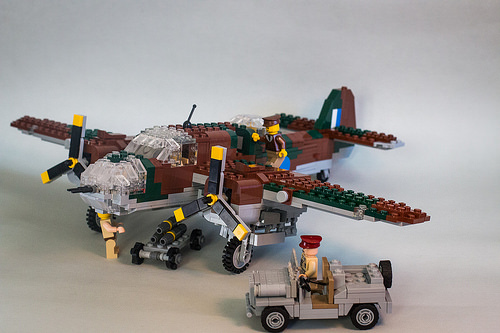We have featured a fair few trains built by Carl Greatrix (bricktrix) in the past. More recently he turned his attention to cars. Apparently there isn’t much that he cannot do, as he has now built an F-4B Phantom II jet fighter and it is gorgeous. I have been following his work-in-progress pictures for weeks, eagerly looking forward to the finished model.
In the sixties and early seventies, the Phantom was the premier fighter aircraft in the US armed forces, serving with the Navy, Marine Corps and the Air Force. Carl’s model wears flamboyant markings typical for US Navy Phantoms. The markings of VF-161 Chargers, which was home-based in Japan as part of the Air wing assigned to USS Midway, were some of the most attractive ever to grace a Phantom and I applaud Carl for choosing this squadron. The model isn’t just good-looking, but has a lot of functionality too. It has opening cockpits, for instance, as well as a retractable undercarriage and moveable control surfaces. Although I actually like studs on a model and prefer my own aircraft models to be somewhat less reliant on stickers, it’s interesting to see Carl apply his typical style to this subject. The result is phabulous.















